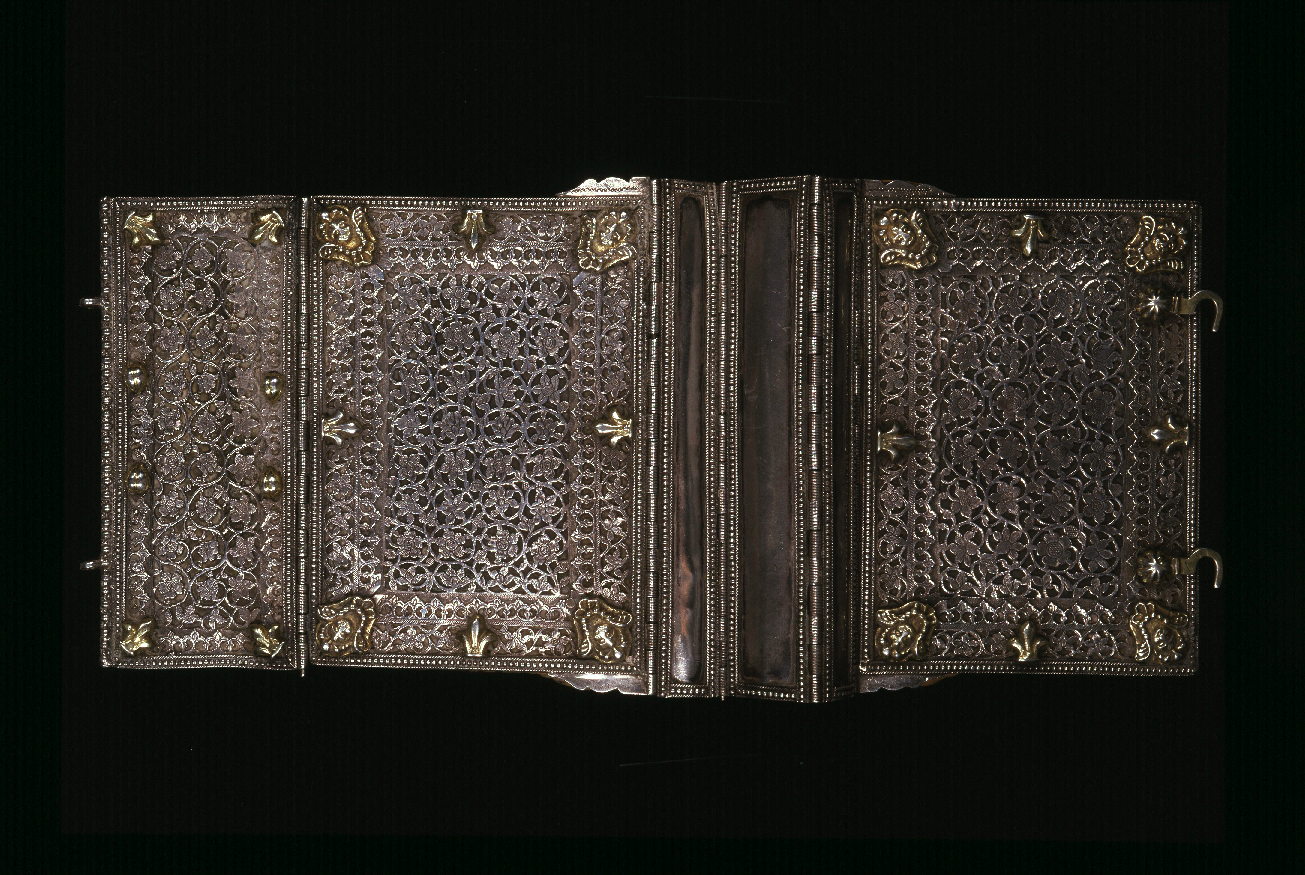
- Isfahan, 1686
- Vellum
- Inv. L.A. 216
The Four Gospels
Written in an Armenian minuscule script called bologir, this work was profusely illuminated by the painter Hayrapet. The binding is in chased silver with an openwork geometric pattern, with angels’ heads in gilded metal at the corners and a fleur-de-lis in the same metal at the centre of each cover. The inner doublures are lined with brocaded silk.
In the late 17th and early 18th centuries, Armenian goldsmiths also contributed to the bindings for manuscripts of the New Testament, generally using silver to reproduce scenes from the Gospels for the bindings’ covers. The geometrical decoration on this piece, attributed to the goldsmith Malkhas Mahdesi Karapet (act. 1683–1704), is unusual as neither the Evangelists nor Christian iconographic symbols appear.
Acquired by Calouste Gulbenkian through M. Giraud Badin, Paris, 23–4 May 1935 (lot 12).
H. 10.8 cm; W. 7.9 cm
Nersessian Der 1978
Sirarpie Nersessian Der, Armenian Art. London: Thames and Hudson, 1978, fig. 178, 233.
Nersessian 1980
Vrej Nersessian, Catalogue of Early Armenian Books, 1512-1850. London: The British Library, 1980, pp. 21–4.
London 2001
Vrej Nersessian, Treasures from the Ark. 1700 Years of Armenian Christian Art, exhibition catalogue. London: The British Library, 2001, p. 189, no. 118.